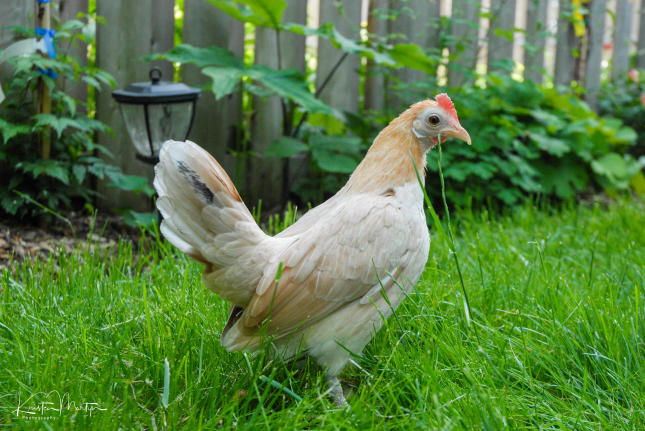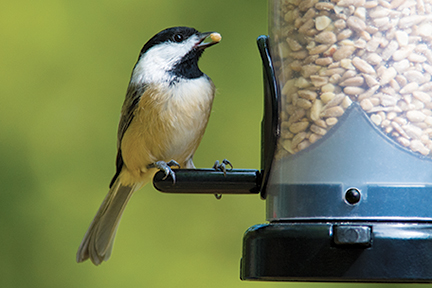Avian Influenza in Wild Birds 2025
Updated March 2025
Please note: This Avian Influenza outbreak is continuously evolving. We will update our guidance as needed.
What is Avian Influenza Type A (H5N2, H5N8 and H5N1)?
Avian Influenza Type A is a virus that occurs naturally among wild aquatic birds worldwide (ducks, geese, shorebirds etc.) as well as domesticated poultry and waterfowl. It was first documented in 1878 and since then has been found in domestic and wild birds all around the world. The current avian influenza in Canada and the US is a form of HPAI H5N1 that is the same as has been found in Europe (also considered the Eurasian H5 avian influenza).
Avian influenza Type A viruses usually do not infect humans and only rare cases of human infection with these viruses have been reported during past outbreaks in other countries. The US Centers for Disease Control and Prevention and the Public Health Agency of Canada currently deem H5N1 to be of low human health risk. According to the Government of Canada’s website “On November 13, 2024, the Public Health Agency of Canada confirmed a human case of A(H5N1) in Canada. This is the first instance of a human case of A(H5N1) that came from transmission within Canada.” H5N1 virus infections in people are rare and these viruses do not spread easily from person to person and require direct prolonged exposure. Most infections that have been detected have occurred in people with close or prolonged, unprotected contact with infected poultry.
There have been no human cases of avian influenza resulting from exposure to wild birds in North America.
How Avian Influenza A(H5N1) Spreads
Avian influenza spreads through animal secretions (such as mucous and saliva) and feces. While the virus spreads easily between some types of birds (such as poultry and waterfowl) it is not well adapted to mammals including humans. You cannot get infected by eating thoroughly cooked poultry, eggs and meat. Pasteurized milk and milk products are also safe to consume.
Feeding Wild Birds in Your Backyard
Research has shown it is extremely difficult for songbirds to contract avian influenza and that avian influenza, is not transmitted at bird feeders. There has been zero evidence to suggest it can be spread at bird feeders. There is no need to stop watching, feeding or attracting birds to your yard because of the avian flu. There is no evidence humans are at risk of contracting avian flu from backyard birds or bird feeding. There is no known risk of becoming infected with avian flu from bird feeders or baths. The use of bird feeders is safe, but they should be removed from areas that are open to poultry and other domestic animals.
In North America, the wild birds most likely to harbour avian flu or spread it are gulls, ducks and other waterfowl. The backyard birds that visit our feeders appear to be significantly less susceptible and much less likely to become a source of the virus.
Avian Influenza and Other Wildlife
While primarily an illness of birds, avian influenza can also infect mammals. In particular, it affects mammals that are hunters and scavengers, and most likely preying on infected birds. This is also true for birds that are hunters and scavengers as well. For example, birds of prey including hawks, falcons and owls who contract the virus have most likely preyed on infected birds. Avian influenza may also affect those mammals that are exposed to heavily contaminated environments, such as shorelines where infected wild birds are congregating or in a agricultural setting where infected poultry reside.
In addition to birds, some mammals have been infected including:
- Domestic cats*
- Wild cats (i.e. mountain lion)
- Wild canines (i.e. coyotes and foxes)
- Bears
- Marine mammals (i.e. seals and sealions)
- Otters
- Raccoons
- Skunks
- Opossums
- Mink and other farmed fur animals
- Livestock (cattle and goats)
For the health and safety of wild bird populations, other wildlife and the cats themselves, domestic cats should be kept indoors. Avian influenza is another example of illnesses that cats are exposed to when allow to free roam outdoors. Cats should always be kept indoors. It is safest for the cats and wildlife.

The Use of Bird Feeders is Safe; However Backyard Poultry Hobbyists Should Take Extra Caution
What the Experts Are Saying
Only you can decide what the best course of action is for your yard, this will in part depend on whether you also keep domestic birds (poultry). Many leading experts from around North America do not believe there is any reason to remove bird feeders at this time as backyard birds seem to be significantly less susceptible to the disease. Here is what some of the experts are saying:
Birds Canada (birdscanada.org)
"Is it safe to use a bird feeder? According to Environment and Climate Change Canada, the use of bird feeders is still safe on properties without domestic poultry. Avian Influenza does not affect all bird species in the same way; while it can cause severe illness and death in domestic poultry flocks, it is currently not considered a disease threat to feeder birds.
To help keep feeder birds healthy, clean feeders every two weeks. Scrub and soak feeders with 10% chlorine bleach solution (use one part bleach to nine parts water). Rinse feeders thoroughly and allow to completely dry before refilling.”
The Cornell Lab of Ornithology published a great resource on avian influenza. In the article they mention that there is a low risk of avian flu in songbirds and as such there is no need to remove feeders. Below are a few excerpts from the article. The article in full can be read by clicking the following link: Lab of O Avian Flu
"Low Risk Of Avian Flu To Songbirds
There is currently very low risk of an outbreak among wild songbirds, and no official recommendation to take down feeders unless you also keep domestic poultry, according to the National Wildlife Disease Program. We do always recommend that you clean bird feeders and birdbaths regularly as a way to keep many kinds of diseases at bay.
We also always recommend that you follow any recommendations put out by your state government, such as the recent request to take down feeders in Illinois. We will update this page as the situation develops.
How Do We Know Songbirds Are At Low Risk?
- USDA APHIS has a strong, multiyear surveillance program that routinely samples wild birds, including flocks of songbirds (and other species such as Rock Pigeons and Mourning Doves that are often around humans), for the presence of avian influenza. So far in 2022, they’ve detected the HPAI strain in 857 wild birds, with 6 detection in songbirds, all American Crows in North Dakota. Latest info about the outbreak.
- Avian influenza does not affect all types of birds equally. The “highly pathogenic” part of the term HPAI refers specifically to the severity of the disease in poultry, not necessarily in other bird species. For example, waterfowl often carry and transmit bird flu, but rarely get sick from the disease (even from HPAI strains). Raptors are much more sensitive to the disease than waterfowl. Domestic poultry are extremely susceptible to HPAI and spread the disease easily, leading to up to 100% mortality of affected flocks.
- Songbirds are much less likely than waterfowl to contract avian influenza and less likely to shed large amounts of virus, meaning they do not transmit the disease easily. (See Shriner and Root 2020 for a detailed review in the journal Viruses.
- According to a separate study in the Journal of Wildlife Diseases, “…although passerines and terrestrial wild birds may have a limited role in the epidemiology of IAV [avian influenza A viruses] when associated with infected domestic poultry or other aberrant hosts, there is no evidence supporting their involvement as natural reservoirs for IAV.” (Slusher et al. 2014)
- For these reasons, it is unlikely that bird feeders will contribute to an outbreak among songbirds."
Environment and Climate Change Canada
"“The use of bird feeders is unlikely to spread highly pathogenic avian influenza virus, and the risk of an outbreak in wild bird species that frequent feeders is considered low.
Be sure to follow these guidelines if you use backyard bird feeders:
- To minimize the risk of transmission of HPAI virus, do not feed waterfowl, gulls, or other water birds
- Do not handle or feed any wild bird by hand
- Remove bird feeders from areas that are open to poultry and other domestic animals
- If you care for poultry, prevent contact between wild birds and your animals by removing exterior/outdoor sources of food, water, and shelter that attract wild birds
- Be sure to clean your backyard bird feeders and baths regularly, at least every two weeks, using a solution of one part household bleach to nine parts water. Ensure that they are well rinsed and dried before re-use
- Regular cleaning practices are essential for infection prevention and control, as various other pathogens are known to spread at feeders (e.g., trichomonas, salmonella, and avian pox)
If sick birds are observed near bird feeders, the feeders should be removed and the sick birds reported to the appropriate authority.”
Recommendations
We have always been big proponents of disinfecting and washing bird feeders as often as possible to mitigate naturally occurring diseases in bird populations. Feeders should be disinfected with the 10% bleach solution, rinsed well, then washed with soap and water, rinsed again, left to dry and finally refilled with fresh food. We also offer a bird feeder cleaning service. You can drop off feeders for cleaning for $8 each and $5 each per accessory.
For more information on cleaning bird feeders and baths CLICK HERE.
As with any bird or animal (wild or domestic), it is always prudent to take sensible precautions after direct or indirect contact. Be careful around animal droppings and wash hands after contact with soap and water. To minimize the risk of transmission of HPAI, do not handle or feed any wild bird by hand.
*If you care for poultry, prevent contact between wild birds and poultry by removing exterior/outdoor sources of food, water and shelter that attract wild birds.
Signs of a Sick Bird
Do not touch a dead, injured or sick bird. Signs of avian influenza include:
- Nervousness, tremors or lack of coordination
- Swelling around the head, neck and eyes
- Lack of energy or movement
- Coughing, gasping for air or sneezing
- Diarrhea
- Sudden death
Reporting Sick or Dead Birds
Report sick or dead birds to:
- In Ontario, to the Ontario regional centre of the Canadian Wildlife Health Cooperative at (866) 673-4781
- Canadian Wildlife Health Cooperative Website
More Resources from the Government of Canada
- Avian Influenza in Wild Birds
- Detection of highly pathogenic avian influenza (H5N1) in Canada
- Avian Influenza A(H5N1): Prevention and Risks
- A Background of Avian Influenza (Bird Flu)

